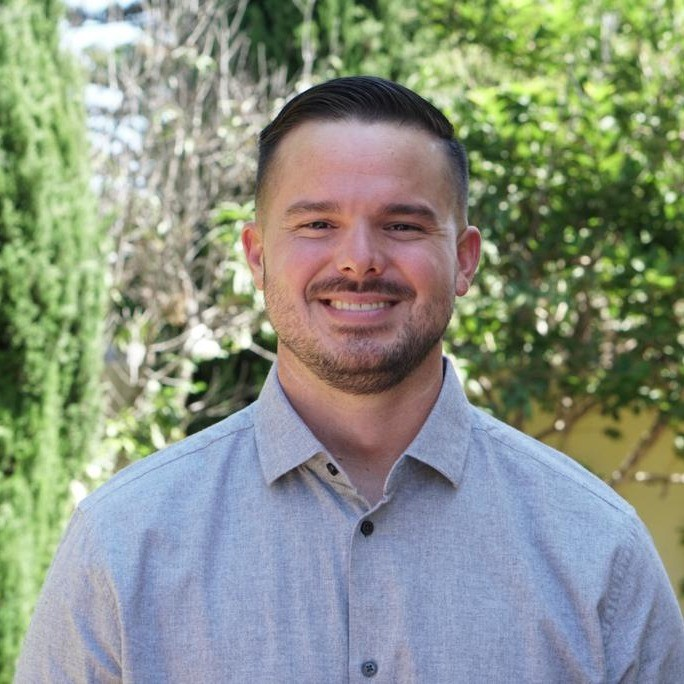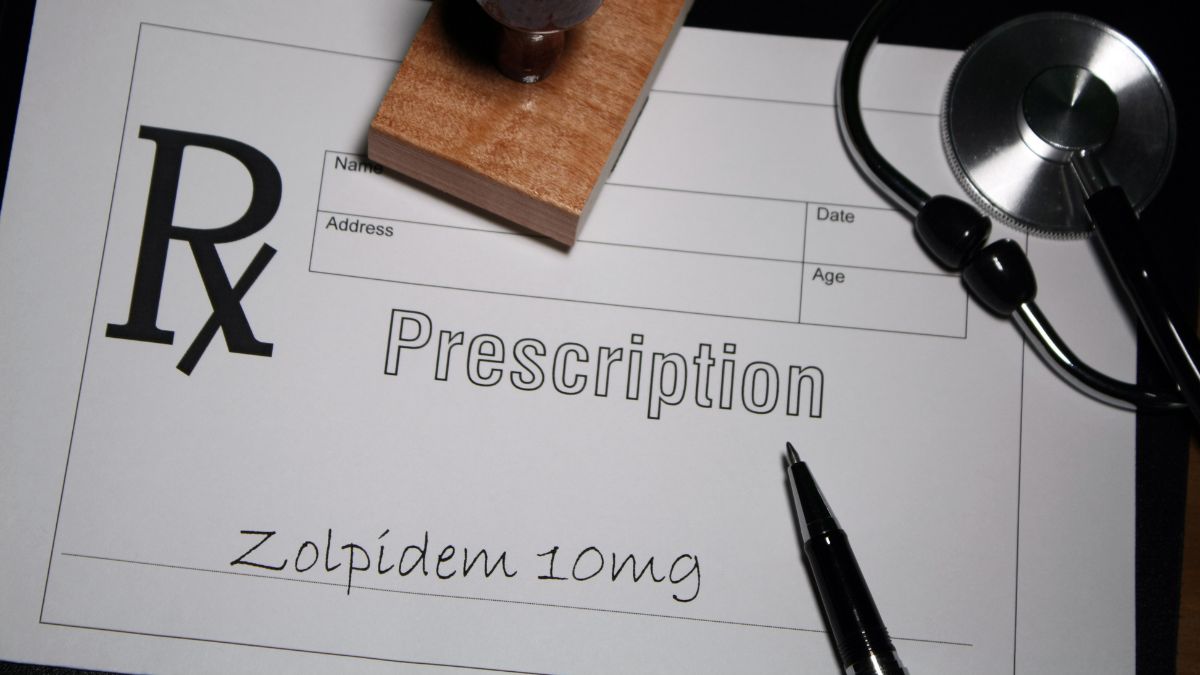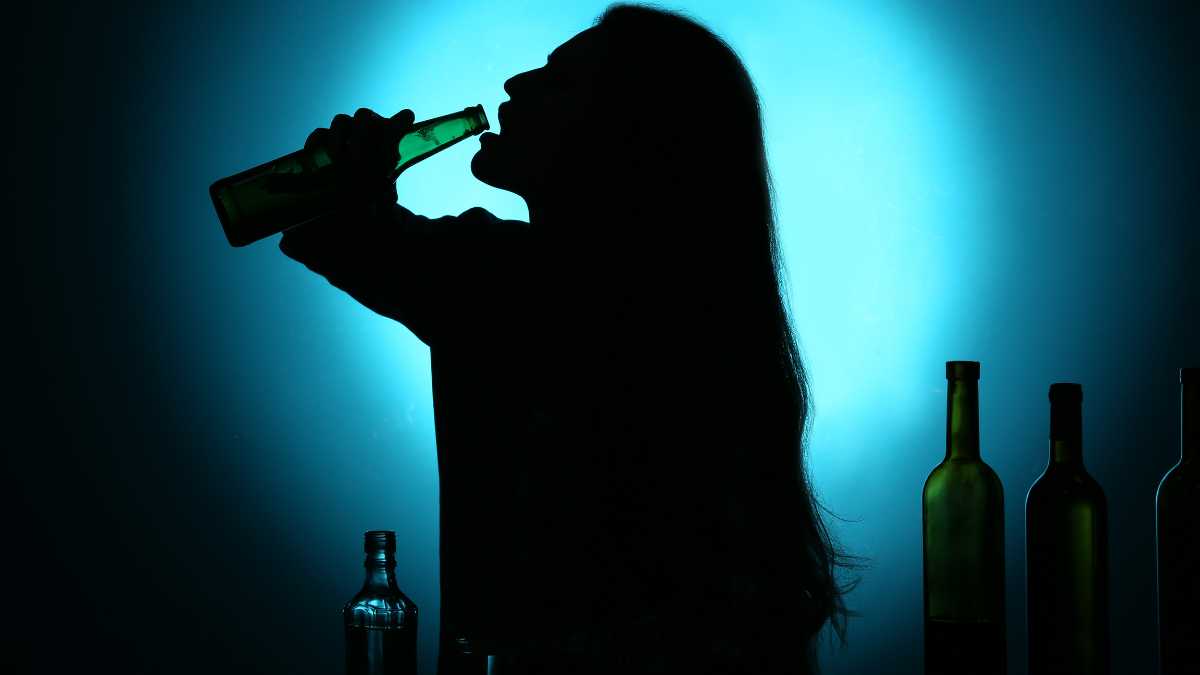Recent years have observed an alarming rise in drug misuse among college students. A 2019 Journal of American College Health study revealed that approximately 60% of students had been offered drugs by their second year.
Many factors contribute to this trend, including increased availability of drugs and students using substances to cope with academic and personal stress.
A report from Harvard Medical School found that about 1 in 3 college students grapple with depression, pushing many toward drug use.
These substances bring significant academic and health challenges, so universities are intensifying prevention efforts.
Why do college students turn to drugs?
College students often turn to drugs due to stress, anxiety, curiosity, peer influence, and cultural influences, among other reasons. Diving deeper into these motivations:
- Stress and Anxiety: Academic responsibilities and personal growth challenges can drive students towards drugs for coping.
- Curiosity and Peer Influence: The college environment, filled with opportunities for experimentation, tempts some students to try drugs.
- Exploratory Behavior: The young adult phase is marked by boundary testing, which can include drug use.
- Cultural and Societal Influences: Media’s portrayal of drug use can make it appear harmless and appealing.
What are the signs and symptoms of drug use in college?
Signs of drug use in college students manifest through behavioral changes, physical indicators, financial shifts, and altered emotional states. Observing these closely reveals:
- Behavioral Changes: Diminished academic performance, class absenteeism, or social withdrawal might be red flags.
- Physical Indicators: Symptoms like weight changes, dilated pupils, or bloodshot eyes can indicate drug abuse.
- Financial Indicators: Inconsistent finances, borrowing money, or sudden financial gains can be suspicious.
- Physical Appearance: A decline in hygiene or consistent use of clothing to hide body marks might be warning signs.
- Social Patterns: A sudden change in friendships, especially towards those known for drug use, is concerning.
- Emotional Manifestations: Extreme anxiety, fluctuating energy levels, or depression can be signs of drug involvement.
What are the Most Commonly Abused Drugs in Colleges?
Colleges observe widespread abuse of substances like alcohol, marijuana, prescription stimulants, and even hard drugs like cocaine and opioids. Delving into each of these substances:
Alcohol
Alcohol is a psychoactive substance derived from fermented or distilled grains, fruits, or vegetables. It remains a dominant choice among college students due to its social acceptance.
Students commonly abuse alcohol during parties, social gatherings, and certain times of the year, like spring break or major sporting events. While moderate consumption may seem harmless, excessive or binge drinking can result in side effects ranging from memory blackouts to impaired judgment.
Symptoms of alcohol abuse among college students can include frequent hangovers, neglect of responsibilities, aggressive behavior, and depression.
Such behavior jeopardizes their health and exposes them to risks like academic failure, accidents, and alcohol poisoning. Recognizing these signs is pivotal, as timely intervention and seeking professional help can prevent long-term repercussions.
Marijuana
“Marijuana, derived from the Cannabis plant, is known for its psychoactive effects. It has gained widespread acceptance among college students due to its reputation as a “harmless” recreational drug.
Commonly consumed through smoking or edible products, its use peaks during parties and relaxed gatherings. Despite its popularity, marijuana can impair memory, concentration, and coordination. Symptoms of excessive use or dependency include a noticeable drop in academic performance, increased anxiety, and changes in social behavior.
Prolonged use can lead to psychological dependence, affecting personal and academic life. Awareness of these consequences is crucial, prompting students to seek professional guidance.
Prescription stimulants (such as Adderall, Ritalin, and Concerta)
Prescription stimulants are medications designed to treat conditions like ADHD. However, many college students misuse them for their alertness-enhancing properties, especially during exam periods or intense study sessions.
When consumed without medical supervision, these drugs can lead to increased heart rate, high blood pressure, and anxiety. Common signs of misuse include sleep disturbances, dramatic mood swings, and an over-reliance on the drug for academic performance.
This dependency poses health risks and leads to academic integrity issues. Recognizing these signs early and reaching out for professional help can prevent more severe health and academic consequences.
Cocaine
Cocaine is a powerful stimulant derived from the coca plant. Despite its dangerous side effects, it has found its way into college parties and gatherings due to its intense, euphoric high, and energy-boosting properties.
Frequent users consume it during late-night parties or in situations demanding prolonged wakefulness. Its use can result in severe health issues like increased heart rate, nasal damage, and cardiac arrest. Signs of cocaine abuse among college students include increased agitation, paranoia, and drastic weight changes.
Engaging with this drug also exposes students to risks of academic failure, legal troubles, and addiction. Understanding the grave consequences associated with its use encourages the need for professional intervention if signs of abuse are evident.”
Molly
Molly, often called MDMA, is a psychoactive drug popular for its euphoria-inducing properties.
College students are drawn to Molly for the heightened sensations of closeness and empathy it offers, commonly consumed during parties, festivals, and raves.
The drug can lead to dehydration, hyperthermia, and increased heart rate. Those misusing Molly might display symptoms such as excessive sweating, teeth clenching, and a distorted sense of time.
The risks of Molly are vast, ranging from drug dependence to the danger of consuming adulterated pills. Students showing signs of Molly misuse should immediately be directed to professional counseling or medical assistance.
Ecstasy
Ecstasy, another name for MDMA, is a stimulant with hallucinogenic effects. Its allure among college students lies in its ability to enhance sensory experiences and boost energy, making it a frequent choice for night-long dance events or parties.
However, its side effects, including nausea, blurred vision, and panic attacks, can be dire. Signs of Ecstasy abuse encompass dehydration, erratic behavior, and prolonged wakefulness.
Over time, use can result in cognitive impairments and severe dehydration, mainly if mixed with other substances. Professional medical attention or counseling is paramount if a student is suspected of abusing Ecstasy.
Call Design for Recovery to Begin Your Healing Journey!
Reach out to our team to discuss sober living options and next steps toward a healthier routine.
Synthetic cannabinoids (such as “spice” or “K”)
Synthetic cannabinoids, often known by street names like “spice” or “K2,” are chemically engineered substances that mimic the effects of marijuana.
Many students experiment with these because they’re often marketed as “safe” or “natural” alternatives to marijuana—their usage peaks in casual gatherings or among those trying to evade drug tests.
The side effects of these synthetic drugs can be unpredictable and range from nausea to kidney damage. Symptoms of abuse might include violent behavior, paranoia, or even hallucinations.
The risks tied to synthetic cannabinoids are pronounced due to their unpredictable nature and potential for severe physical and mental health complications. Students dabbling with these drugs should seek professional guidance urgently.
Opioids (including prescription painkillers and heroin)
Opioids are a class of drugs that include legal pain relievers, such as oxycodone, hydrocodone, and morphine, as well as illegal drugs like heroin. Students might turn to opioids initially for pain management or out of curiosity, consuming them during stress or recreation.
However, opioids can depress the respiratory system, leading to overdoses. Symptoms of opioid abuse in college students include drowsiness, constricted pupils, and slow breathing. The risks are grave—physical addiction, overdose, and even death.
Given the dangerous nature of opioids and the ease with which one can overdose, it’s crucial for students showing signs of abuse to obtain professional medical intervention without delay.
Benzodiazepines (such as Xanax and Valium)
Benzodiazepines are a class of drugs prescribed to treat conditions like anxiety, insomnia, and seizures. Their calming effects can appeal to college students during stressful academic periods or as a way to unwind.
However, the misuse of benzodiazepines can lead to dizziness, confusion, drowsiness, and even respiratory depression. When mixed with alcohol or other drugs, the risks escalate dramatically. Symptoms indicative of benzodiazepine abuse include slurred speech, poor concentration, and memory problems.
Given the potential for dependence and dangerous interactions with other substances, students misusing these drugs should be directed toward medical professionals.
Hallucinogens
Hallucinogens are a diverse group of drugs that alter a person’s awareness of their surroundings, perceptions, and feelings, often causing hallucinations—experiences where people perceive things that are not there.
Some students may experiment with hallucinogens drug for their mind-altering experiences, especially during social events. The side effects can range from hallucinations and paranoia to impaired judgment and unpredictable behaviors.
Signs of hallucinogen use include distorted perceptions, incoherent speech, and irrational behaviors. While not typically associated with physical addiction, the unpredictable nature of hallucinogens can place users in dangerous situations.
If a student is suspected of misuse, they should be connected with counseling services or medical professionals to address potential harm.
Tobacco and Nicotine
Tobacco is a product prepared from the leaves of the tobacco plant by curing them, and it’s primarily consumed for its nicotine content.
On the other hand, nicotine is a stimulant found in the nightshade family of plants and is the primary reason tobacco is addictive.
Many college students might pick up the habit as a social activity or use nicotine as a perceived stress reliever during exams. However, regular nicotine use can lead to respiratory problems, cardiovascular disease, and addiction.
Indicators of excessive nicotine consumption encompass frequent smoking or vaping, yellowing of teeth, and a persistent cough. Given the long-term health risks and the challenge of quitting once addicted, efforts to prevent initiation or promote cessation among college students are vital.
Those seeking to quit should explore available support systems, from campus health centers to national helplines.
What are the short-term and long-term effects of drug abuse in colleges?
Short-term effects of drug abuse in colleges include heightened senses and impaired judgment, while long-term effects can lead to addiction and prolonged health issues. Let’s explore these effects more profoundly.
Short-term effects of drug Abuse in colleges
Immediately after drug consumption, students often experience sensations such as heightened senses, euphoria, or relaxation. However, these sensations are accompanied by more concerning outcomes:
- Impaired judgment
- Memory problems
- Paranoia
- Risk of overdose
- Missed classes and poor academic performance
- Strained relationships with peers and faculty
Long-term effects of drug abuse in Colleges
Long-term drug abuse in colleges can result in addiction, chronic health issues, emotional disorders, and jeopardized future opportunities. Delving deeper:
- Addiction: Persistent drug use often leads students into a cycle of dependence, making it challenging to focus on academics or maintain social relations.
- Chronic health issues: Prolonged drug consumption can bring about respiratory problems, liver diseases, or neurological complications, compromising a student’s overall health.
- Emotional and psychological disorders: Disorders like depression, anxiety, or even psychosis might be triggered or worsened by continued drug use.
- Jeopardizing future opportunities: With eroded academic performance and potential criminal records, post-graduation prospects like job offers or further studies can be hindered.
What are the Risks of Abusing Drugs?
The risks of abusing drugs encompass physical health threats like respiratory distress, cardiovascular diseases, and mental health concerns such as depression and anxiety. Let’s delve into these risks further.
Physical health risks of abusing drugs
Drug misuse can result in respiratory distress, cardiovascular diseases, strokes, and damage to vital organs. Breaking it down:
- Respiratory distress: Some drugs, especially when smoked, can damage the lungs, leading to chronic bronchitis or lung infections.
- Cardiovascular diseases: Stimulants, for instance, can elevate blood pressure or lead to arrhythmias, increasing the risk of heart-related issues.
- Stroke: Drugs that affect blood pressure and heart rate can enhance the likelihood of a stroke.
- Liver damage: Chronic drug use, especially with alcohol, can harm the liver, causing conditions like fatty liver, hepatitis, or even cirrhosis.
- Specific threats linked to individual drugs: For example, opioids can cause respiratory depression, while stimulants might amplify the risk of a heart attack.
Contact Design for Recovery Today!
Fill out our quick form to connect with a peer mentor and learn how our sober living community supports accountability, structure, and personal growth in recovery.
Mental health risks of abusing drugs
Abusing drugs can exacerbate conditions like depression, impair cognitive functions, erode emotional stability, and disrupt academic and social interactions. To explain further:
- Exacerbation or triggering of disorders: Conditions such as depression, anxiety, or schizophrenia can be ignited or aggravated by drug abuse.
- Impaired cognitive functions: Memory, judgment, and analytical abilities might be compromised, affecting academic performance.
- Eroded emotional stability: Chronic drug abuse can lead to mood swings, heightened irritability, or feelings of paranoia.
- Disruption in academic performance and relationships: The mental toll often causes friction in interpersonal relationships and academic commitments.
What are the consequences of drug abuse on college campuses?
One of the primary repercussions of drug abuse on college campuses is the rise in drug-related crimes, jeopardizing the academic environment’s safety and integrity.
Delving deeper:
- Drug-related College Crimes: The increasing prevalence of drug abuse often correlates with a surge in drug-related offenses, such as possession, distribution, and even incidents of theft or assault that stem from drug-induced behavior.
How Colleges Can Address the Issue of Drug Abuse?
Colleges are pivotal in tackling drug misuse by implementing comprehensive awareness programs, offering counseling services, and fostering a culture prioritizing health and well-being. Actions that can be taken include:
- Awareness Campaigns: Hosting seminars, workshops, or campaigns to highlight the dangers and repercussions of drug misuse.
- Counseling and Rehab Services: Making counseling and rehabilitation services accessible and stigma-free, guiding affected students towards recovery.
- Fostering a Healthy Culture: Encouraging sports, meditation, and group discussions can divert students from negative influences and promote holistic development.
- Strict Regulations and Monitoring: Monitoring campus activities, collaborating with law enforcement agencies, and ensuring strict consequences for drug-related offenses can be a deterrent.
Which drugs are most frequently found on college campuses?
Alcohol, marijuana, prescription stimulants, and hallucinogens rank among college campuses’ most commonly used drugs.
The prevalence of these substances is influenced by societal and economic factors, as well as specific campus cultures and events.
The glamorization or normalization of drug use in media, the affordability of certain drugs, and the presence of events such as rave parties can further guide the drug preferences of students.
Why are certain drugs more popular in college settings compared to others?
Certain drugs gain popularity in college settings due to their easy accessibility, perceived harmlessness, and ongoing trends. For instance, drugs deemed ‘soft’ or less harmful may become prevalent, especially when users lack comprehensive information about the associated risks.
Drugs can also experience trends, becoming momentarily ‘in’ before being overshadowed by another substance. The presence of specific events on campuses, like music festivals, also promotes the use of drugs like ecstasy or Molly.
How do students typically obtain these drugs?
Students often acquire drugs through various avenues such as friends, parties, overseas acquaintances, and even the dark web. Social settings play a pivotal role, with many drug exchanges happening at parties or gatherings.
International or out-of-state students might bring novel substances, diversifying the range of available drugs. Moreover, the tech-savvy lot could resort to anonymous online marketplaces, further broadening the accessibility of substances.
How has the trend of drug abuse in colleges changed over the years?
Over the years, drug abuse trends in colleges have evolved, transitioning from the widespread use of cocaine in the ’80s to the current rise in the misuse of prescription stimulants and opioids.
Such shifts are influenced by societal norms, availability, and perceptions of drug risks, necessitating continuous vigilance by educational institutions.
What is the growing concern about drugs on college campuses?
One of the major concerns on college campuses today is the normalization of drug use, driven partly by peer pressure and the misconception that certain substances, like prescription drugs, are safer.
Coupled with easy accessibility, the lack of proper awareness, and inadequate counseling services, this has led to a surge in drug-related incidents and associated health risks.
What percentage of college students have reported binge drinking?
Approximately 40% of college students have reported binge drinking in the past month. Binge drinking, which involves consuming multiple drinks quickly, poses serious health risks and can lead to accidents, injuries, and impaired academic performance.
What is the most prevalent illicit drug used on college campuses?
Marijuana remains the most widely used illicit drug on college campuses. With changing legal landscapes and increased social acceptance, its usage among students has consistently risen, sometimes leading to challenges in academics, mental health, and daily functioning.
What are some prescription drugs that college students commonly misuse?
College students frequently misuse prescription drugs such as Adderall, Ritalin, and Concerta (stimulants), as well as opioids like Vicodin and OxyContin. These are often taken under the mistaken belief that they enhance academic performance or can be used safely for recreational purposes.
What percentage of college students use tobacco and nicotine delivery products?
Around 20% of college students use tobacco, with an increasing number now turning to modern nicotine delivery systems like vapes and e-cigarettes. While marketed as safer alternatives, these products carry their own health risks and addictive properties.
What are some examples of hallucinogens that college students commonly abuse?
LSD(acid), psilocybin mushrooms (magic mushrooms or “shrooms”), and DMT are examples of hallucinogens that some college students experiment with. While not as widespread as other substances, they can lead to intense altered perceptions, potential mental health issues, and dangerous behaviors. It’s important to bear in mind the potential risks of mushroom overdose.
- Why do college students turn to drugs?
- What are the signs and symptoms of drug use in college?
- What are the Most Commonly Abused Drugs in Colleges?
- Alcohol
- Marijuana
- Prescription stimulants (such as Adderall, Ritalin, and Concerta)
- Cocaine
- Molly
- Ecstasy
- Synthetic cannabinoids (such as “spice” or “K”)
- Opioids (including prescription painkillers and heroin)
- Benzodiazepines (such as Xanax and Valium)
- Hallucinogens
- Tobacco and Nicotine
- What are the short-term and long-term effects of drug abuse in colleges?
- Short-term effects of drug Abuse in colleges
- Long-term effects of drug abuse in Colleges
- What are the Risks of Abusing Drugs?
- Physical health risks of abusing drugs
- Mental health risks of abusing drugs
- What are the consequences of drug abuse on college campuses?
- How Colleges Can Address the Issue of Drug Abuse?
- Which drugs are most frequently found on college campuses?
- Why are certain drugs more popular in college settings compared to others?
- How do students typically obtain these drugs?
- How has the trend of drug abuse in colleges changed over the years?
- What is the growing concern about drugs on college campuses?
- What percentage of college students have reported binge drinking?
- What is the most prevalent illicit drug used on college campuses?
- What are some prescription drugs that college students commonly misuse?
- What percentage of college students use tobacco and nicotine delivery products?
- What are some examples of hallucinogens that college students commonly abuse?







Written By
David Beasley